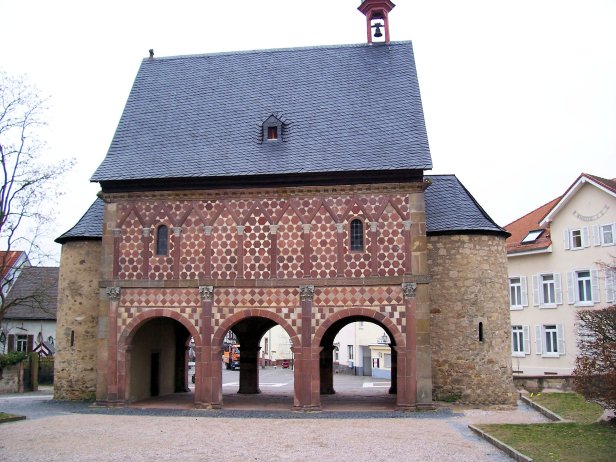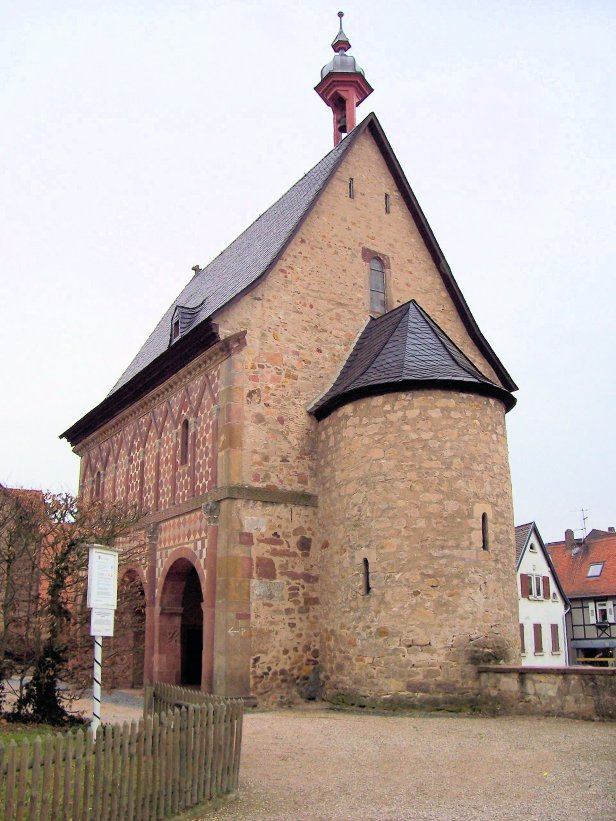Just outside of the famous city of Worms, Germany is a lesser-known, but historically significant little abbey known as Kloster Lorsch. It may not look like much from the outside, but there is a lot of history at Kloster Lorsch. Founded by the Frankish Count Cancor in 764, the abbey stands as a monument to the Carolingian Empire.
The story goes that in 766 the remains of Saint Nazarius (executed under the persecutions of Diocletian) were brought to the abbey in order to make it a popular place of pilgrimage. Saint Nazarius was reportedly responsible for many miracles performed through the Early Middle Ages. In 774 the abbey was consecrated in the name of Saint Nazarius by the Archbishop of Mainz, in the presence of Charlemagne. That means that this little abbey was important enough for Charlemagne himself to visit it.
The abbey was significant in the Early and High Middle Ages as a center for, and a repository of ancient and medieval texts. Above all, Lorsch Abbey is famous for the Codex Aureus, or Lorsch Gospels. The Gospels were written at Lorsch during the late eighth century and covered ivory panels. The Gospels and the ivory panels still exist today, scattered throughout museums in Europe, including the Vatican.
If you’re in Germany, and close to Worms, Lorsch is definitely worth a detour. Carolingian architecture in this beautiful state of preservation is a rare find. Of course it can’t compare in size to the spectacular Carolingian Cathedral at Aachen, but the Abbey at Lorsch brings out the mystery and romanticism of a time period that lies just on border between memory and legend.
The Lorsch Abbey can also be explored online, at the Virtual Monastic Library of Lorsch. Due to its relatively small size and remote location out in the countryside, it would be easy to drive right by without ever realizing that this was one of Germany’s leading centers of learning in the Middle Ages. The history of the abbey throughout the Middle Ages is extensive and more can be read on the UNESCO World Heritage Site.




Hi, Jen! This darling building which you pictured here from a few different angles (thanks for all the perspective!) ~ tall structure with A-line roof, arches below, and flanked by conical-topped round towers ~ is this single building Lorsch Abbey, or is it just part of a bigger abbey complex? (like, the buildings behind it are part of the abbey as well.) And is this building “all” from the 8th century, or are parts of it newer/added-on/restored? Your post mentions how the building is a rare extant piece of Carolingian architecture, so I wondered if this building was common of the types of buildings the 8th-c. Carolingians were looking at in their daily lives…
It is one small piece left of a large Abbey complex! Sorry for not seeing this comment, I’ve been away from the blog a while.
Hi, Jen! This darling building which you pictured here from a few different angles (thanks for all the perspective!) ~ tall structure with A-line roof, arches below, and flanked by conical-topped round towers ~ is this single building Lorsch Abbey, or is it just part of a bigger abbey complex? (like, the buildings behind it are part of the abbey as well.) And is this building “all” from the 8th century, or are parts of it newer/added-on/restored? Your post mentions how the building is a rare extant piece of Carolingian architecture, so I wondered if this building was common of the types of buildings the 8th-c. Carolingians were looking at in their daily lives…